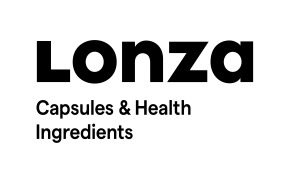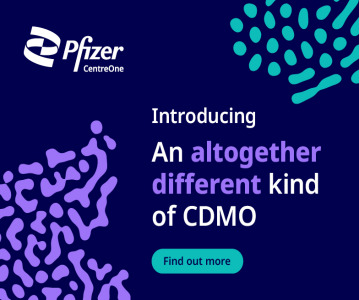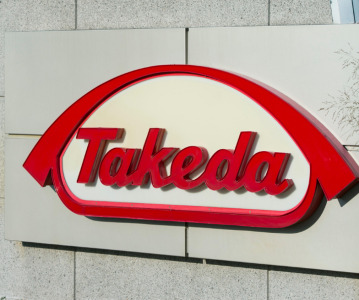Tech transfer: a many-layered artform that demands precision and communication

Tech transfer is a crucial phase that converts clinical promise into commercial gain but pressure on sponsors to reduce time to market in the age of COVID-19 means CDMOs have to be on top of their game to deliver. What are the latest innovations to solve tech transfer challenges?
Technology transfer is a critical step in any pharmaceutical or biopharmaceutical manufacturing and supply contract. The efficacy with which processing knowledge is passed from a drug developer to its contract development and manufacturing organisation (CDMO) will determine how effectively the contractor can service the agreement.
Tech transfer also impacts time to market, which is critical in terms of getting treatments to patients as quickly as possible and in helping drug companies commercialize products.
This point was emphasised in a recent report by McKinsey which suggested efficient and effective technology transfer was vital to efforts to combat the COVID-19 pandemic.
The authors said “Tech-transfer times for sterile dosage forms, such as injectable vaccines, range from 18 to more than 30 months…That will not be true for a COVID-19 vaccine or therapeutic. Society will demand the shortest possible timeline.
“Once a successful vaccine is confirmed, manufacturers will be under extreme pressure, and tech transfer will need to happen as soon as possible, within a few months.”
In addition, tech transfer also shapes how effectively production can be scaled-up, helping to identify the critical unit operations where investment would be required and letting both the customer and contractor find any other potential bottlenecks.
Over the past few decades CDMOs have developed strategies to facilitate streamlined technology transfer that can be tailored to the specific needs of each project. However, as the complexity of drug products and the processes needed to make them has increased, contractors have been forced to innovate.
Typical tech transfer
The World Health Organisation (WHO) defines technology transfer as embodying “both the transfer of documentation and the demonstrated ability of the receiving unit to effectively perform the critical elements of the transferred technology to the satisfaction of all parties and any applicable regulatory bodies.”
Likewise, in its Q10 guidance, the International Council for Harmonisation of Technical Requirements for Pharmaceuticals for Human Use (ICH) stresses the importance of sharing product and process knowledge during the technology transfer process.
The focus of both guidelines is the efficient transfer of information. Typically, processes are split into several stages, beginning with the creation of a complete description of the product – including all source materials – followed by a feasibility study setting out the business case for shifting production.
The next stage is to create a detailed plan followed by the physical transfer of technologies and processes. Subsequent stages focus on identifying variations, registering the product with regulators, preparing for launch and reviewing the project.
SOP approach
To try and achieve this, contract manufacturers have developed generalized transfer protocols, according to a senior supply chain consultant at Orphan Drug Consulting: “Many CDMOs now have standard SOPs for tech transfer, as they should not be reinventing the wheel for each new tech transfer. A responsibilities matrix should be agreed and kept live that defines who within the client and the CDMO is responsible for what, e.g. analytical transfer, process transfer, cleaning transfer etc. Most importantly within this matrix are the two leads from both Parties.”
He adds that “for the CDMO it should be a dedicated Tech Transfer lead or Manager that manages the overall project team within a matrix. Following this, an agreed Tech Transfer Protocol should be drafted and formally approved by both Parties that defines approach, requirements, objectives and success criteria, coupled to an approved detailed project plan capturing activities, responsibilities, timings/duration, critical path etc.”
Again collaboration and a good working relationship are vital, according to the consultant who says a good approach is for the tech transfer team to meet in an informal setting at the beginning of the project to form relationships that will benefit the project going forward.
He also suggests that “project reviews should be scheduled weekly and progress critically assessed via use of the agreed project plan. Lastly remember to celebrate successes.”
Jason Osman, Senior Director and Head of Technical Sales & Customer Proposals at Lonza’s Mammalian Business Unit, says the CDMO “has a well-established modular approach to ensure a robust tech transfer. This approach has been developed over many years and ensures all the required elements are considered in a methodical way to give the best chance of success.”
Tailoring the process to the specific needs of the project is important, according to Osman: “The scope of the tech transfer is dictated by the fit analysis and quantity of information and data available for the product and process at the time of transfer.
“If the process fits the destination facility well, is well-developed and analytics are robust and ready, then a more direct transfer is more possible. With a poor fit and less data or less robust analytics, indirect transfers are more likely.”
Considerations
One of the most important but often overlooked considerations in a tech transfer project is ensuring the process will fit into the space available at the CDMO facility.
According to recent research, in the initial stages of the technology transfer a comprehensive review of process requirements and comparison with facility capabilities should be performed.
This review needs to be detailed and comprehensive which, as another study points out, can be complicated by cultural and language differences if the CDMO in question is based overseas.
According to a separate study, other common pitfalls include: a failure to provide sufficient resources to conduct the transfer; a lack of oversight and co-ordination of the process; and a failure to ensure technology supply chains are correctly aligned.
Drug companies and CDMOs also need to keep in mind that tech transfer is a complex process and there will be challenges, according to Orphan Drug Consulting’s expert: “By all means be aggressive in your planning but you must be realistic. It will, without doubt, take longer than you plan. You will face batch failures, out of scope investigations etc, so plan for some contingency.”
He also stresses the importance of a stable team, explaining “Changes in personnel through the transfer process can cause issues so try, where possible, to have two contacts for each element, with a back-up being available if the primary moves for whatever reason.”
Demands
A more recent challenge is that technology transfer models developed for traditional small molecule pharmaceutical products are less effective for more complex large molecule products or cell and gene therapies.
Researchers at the Technological University of Dublin have noted this dynamic in a recent study, pointing out that changing drug industry demands are forcing CDMOs to innovate.
“The industry has been facing the challenge of intense tech transfers and a shift towards a wider outsourced product portfolio, shorter timelines and increasingly more complex biological products,” they wrote. “The role of CMOs is changing and their customers’ demands are driving CMOs to adapt their services, facilities and technical capabilities.”
One of the CDMO sector executives quizzed by the researchers reported “customers wanting to get into the clinic with a new product within 12 months and transfers having gap analysis, small scale work, pilot and GMP production stages overlapping.”
The 5 C framework
The modern biopharmaceutical industry’s response to tech transfer challenges has primarily focused on communication with many CDMOs adopting the 5C situation analysis model.
The principle is to systematize communication into specific focus areas, namely collaboration, characterisation, co-ordination and continuous improvement. The idea, according to the study published last November, is to “instil a pro-active, pragmatic culture of tech transfer driven by specific triggers in organisations.”
According to the author, “The 5C Framework supports a tech transfer process that has its foundations based on early engagement with a CMO and initiating the project as a team. The technology transfer process, as a whole, supported by project management, documentation, risk and facility fit assessments and training.
“Regular review of key performance indicators (KPIs) allow regular incremental improvements to the process to be made. The 5Cs feed into the technology transfer process and are enablers for success.”
For Pharma
For pharmaceutical companies, vetting the CDMO partner thoroughly is absolutely vital according to Orphan Drug Consulting’s expert, who urged sponsors to make sure their “CDMO allows enough time to execute the sample plan for the transfer batches manufactured,” adding that “this takes time both during batch processing and through analytical testing.
“Pharmaceutical companies also need to build a strong Design of Experiment through scale up so the CDMO gets a good handle on the process being transferred and can react if the process starts to move outside the Design Space. Ensure the relationship stays strong through challenges faced. It benefits no one to enter finger pointing exercises.”
This close working relationship will also be vital during production scale-up, he says adding that it is recommended to work with a contract that uses electronic batch records.
“If you assess the amount of data produced through a ‘standard’ tech transfer, it can be very significant, so simple validated data interpretation tools should be encouraged by the client, for ease of review and trending purposes. The days of scanning 150-page batch documents should really be behind us, but it is curious that for many CDMOs this is still the ‘standard’ process.”

Related News
-
News mRNA therapy for ovarian cancer and muscle wasting
Researchers demonstrate results of a promising mRNA therapy for ovarian cancer and muscle wasting caused by cachexia, a condition associated with various types of cancers and chronic diseases. -
News Pfizer CentreOne Content Refinement Q3 media buy
For 40 years Pfizer CentreOne has been guiding drug projects to success. Here’s how our services make us an altogether different kind of CDMO: -
News Bora Pharmaceuticals expands development and manufacturing capacity with landmark acquisition
Taiwan-based CDMO Bora Pharmaceuticals have acquired niche generic drugs developer TWi Pharmaceuticals, expanding their outsourced development and manufacturing services with two additional manufacturing facilities. -
News Lonza and Touchlight collaboration to bring expanded end-to-end mRNA offerings
Through a collaboration with biotech company Touchlight, Lonza is set to expand their end-to-end offering for mRNA manufacturing with additional DNA raw material sources, including Touchlight’s doggybone DNA. -
News Oxford University presents promising phase II data for malaria vaccine
The malaria vaccine R21/Matrix-M, developed by researchers at Oxford University, has produced encouraging new data for the global effort against the mosquito-borne disease. -
News NextPharma to acquire Norway manufacturing site from Takeda
Biopharmaceutical company Takeda and CDMO NextPharma have announced an acquisition agreement in which Takeda will divest from their Asker, Norway manufacturing site, set to be acquired by NextPharma. -
News Gut instinct: molecular link between COVID-19 and serotonin cells in the gut
New research may provide further evidence of the gut’s role in SARS-CoV-2 infection and disease severity with a molecular link between serotonin-producing cells in the gut and COVID-19 disease severity. -
News Novavax COVID-19 vaccine receives backing from European Medicines Agency
The European Medicines Agency has backed the Nuvaxovid COVID-19 vaccine for adults as a booster shot to other COVID-19 vaccines.
Position your company at the heart of the global Pharma industry with a CPHI Online membership
-
Your products and solutions visible to thousands of visitors within the largest Pharma marketplace
-
Generate high-quality, engaged leads for your business, all year round
-
Promote your business as the industry’s thought-leader by hosting your reports, brochures and videos within your profile
-
Your company’s profile boosted at all participating CPHI events
-
An easy-to-use platform with a detailed dashboard showing your leads and performance


.png)
.png)
.png)

.png)
.png)